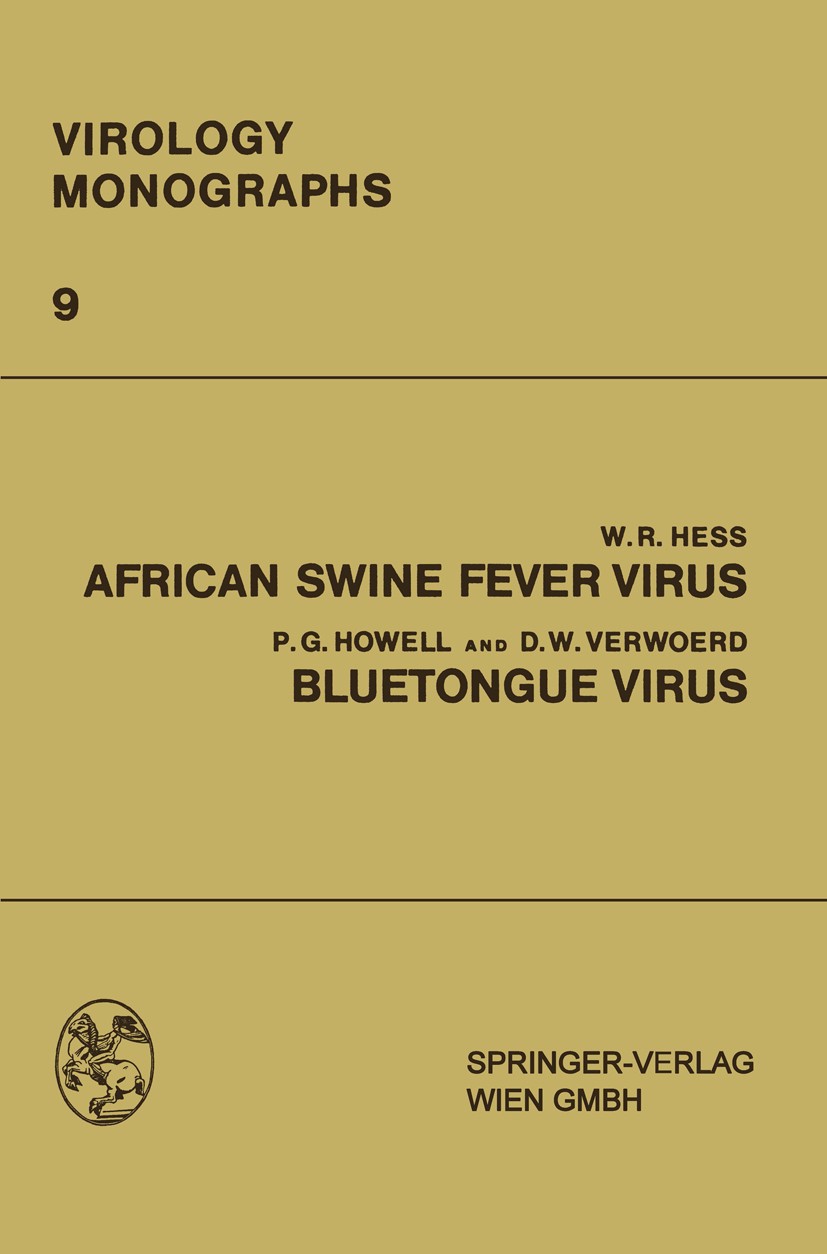| 期刊全称 | African Swine Fever Virus | | 期刊简称 | Bluetongue Virus | | 影响因子2023 | W. R. Hess,P. G. Howell,D. W. Verwoerd | | 视频video | http://file.papertrans.cn/151/150847/150847.mp4 | | 学科分类 | Virology Monographs‘ Die Virusforschung in Einzeldarstellungen | | 图书封面 |  | | 影响因子 | Bluetongue may be described as an acute insect borne disease of ruminants, manifested clinically in sheep by a catarrhal inflammation of the mucous mem branes of the digestive and respiratory systems and associated with degenerative changes in the skeletal musculature. The profound emaciation and weakness which follow the acute disease are responsible for a protracted convalescence and for serious economic losses due to diminished productivity. II. Historical During the early colonisation of Africa, susceptible Merino and other European breeds of sheep were introduced into the Cape, at first by the Dutch East India Company between 1652 and 1785 and again later in 1870. A report of the Cattle and Sheep Diseases Commission (1876) records the appearance of a serious febrile disease amongst these imported sheep in which both morbidity and mortality was high (cited by HENNING, 1949). HuTCHEON (1881) gave this disease the name of "Fever" or "Epizootic Catarrh", in order to distinguish it from other clinical conditions of a similar nature encountered amongst sheep. In the first com prehensive description of this clinical syndrome and its epizootiology HuTCHEON (1902) referred to it as " | | Pindex | Book 1971 |
The information of publication is updating

|
|
 |Archiver|手机版|小黑屋|
派博传思国际
( 京公网安备110108008328)
GMT+8, 2025-11-13 00:59
|Archiver|手机版|小黑屋|
派博传思国际
( 京公网安备110108008328)
GMT+8, 2025-11-13 00:59


